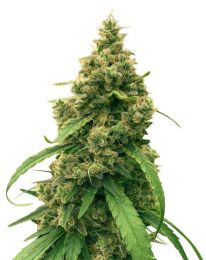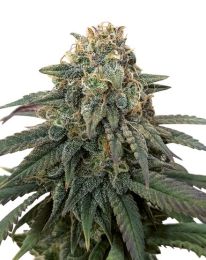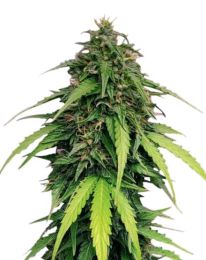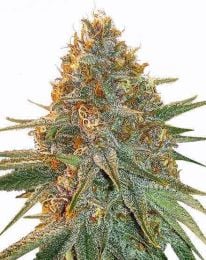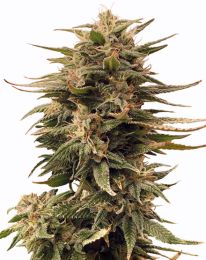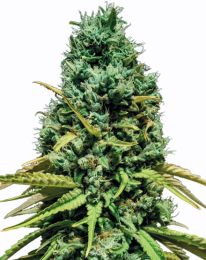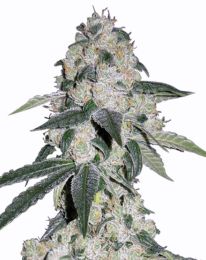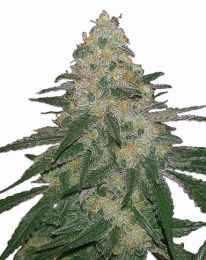CBD Seeds
Known for its therapeutic benefits, cannabidiol (CBD) flower is often grown for its medical uses. Our collection of CBD cannabis seeds have been selectively bred to produce flowers that are high in CBD. By growing your very own plants, you can cultivate your very own natural source of Cannabidiol at home.
Read MoreWHAT ARE CBD CANNABIS SEEDS?
Cannabidiol, also known as CBD is a phytocannabinoid found in marijuana plants. Unlike THC, CBD doesn’t produce any of the psychoactive effects commonly associated with smoking cannabis. Instead, it's main uses are for its reported therapeutic benefits, ranging from pain relief to anxiety reduction. Therefore, growing CBD seeds is great for anyone that wants to produce flower with very little THC and high levels of CBD.
WHAT IS CBD USED FOR?
CBD is used for a wide range of therapeutic and medical purposes. It is most commonly consumed as balms, drops, oils or it can even be smoked as raw flower. There is still a lot more that needs to be studied when it comes to the medical uses of CBD but many people claim that it helps with conditions such as anxiety, epilepsy, movement disorders, insomnia, inflammation, skin conditions and chronic pain. The medical uses for CBD even stretch as far as vetinary medicine, with CBD oils and drops being made specifically for pets.
Because CBD doesn’t produce a "high" like THC does, it offers many of the benefits of cannabis without any of the the psychoactive effects, making it a preferred choice for those who want relief without the other side effects.
WHAT ARE THE PROS AND CONS OF GROWING CBD STRAINS?
PROS:
Therapeutic Potential: High CBD strains offer therapeutic benefits without strong psychoactive effects that other cannabis strains have.
Cheaper than CBD oil: CBD oils and extracts are very expensive, by growing your own CBD flower at home you can use it as you please. Smoke it, extract it, make edibles; The choice is yours.
CONS:
Limited Psychoactive Effects: For those seeking the traditional 'high' associated with cannabis, CBD-rich strains might not deliver the desired effects.
WHAT ARE THE EFFECTS OF CBD WEED?
Unlike THC, which induces psychoactive effects and a characteristic "high," CBD interacts differently with the body, offering a unique set of impacts. While its effects differ from person to person here is a list of the most commonly reported effects:
Relaxation: One of the most commonly noted effects of CBD is the sensation of relaxation without the feeling of being "stoned" or "high." This makes it an appealing option for those seeking calm without altered cognitive functions.
Pain Management: Many users report a reduction in chronic pain when using CBD, attributing this to its potential anti-inflammatory properties.
Reduced Anxiety and Depression: CBD has been explored for its role in managing anxiety and depression. Some individuals find that it helps in creating a balanced mood, though individual results may vary.
Improved Sleep: Difficulty sleeping? Some users find that CBD's helps them to improve sleep quality and reduce insomnia.
Skin Health: Topical CBD products are growing in popularity for potential skin benefits, targeting issues like acne and inflammation.
HOW DO YOU GROW CBD SEEDS?
Growing CBD seeds, much like cultivating any other cannabis seeds, involves a series of steps and considerations to get the most out of your plant. Here’s a beginner's guide to growing your own CBD flower at home.
CLIMATE
Temperature: CBD cannabis plants typically thrive in temperatures between 70-85°F (21-30°C) during the day and slightly cooler at night.
Humidity: Young seedlings prefer higher humidity levels, around 60-70%. As they grow, gradually reduce humidity to about 40-50% during the flowering stage to prevent mold.
Light: Whether you're growing indoors or outdoors, ensuring your plant gets ample light is vital. If you're cultivating inside, invest in quality grow lights. Outdoor plants benefit most from direct sunlight for at least 8 hours daily.
NUTRIENTS
Macronutrients: The three primary nutrients your cannabis plant requires are Nitrogen (N), Phosphorus (P), and Potassium (K). The ratios will vary based on the growth stage.
Micronutrients: Elements like calcium, magnesium, and sulfur are also crucial, though in smaller quantities.
Soil Quality: A rich, well-draining soil can act as a reservoir for these essential nutrients. Alternatively, hydroponic systems require diligent nutrient management.
pH Levels: Monitoring the pH of your soil or water in hydroponic systems is crucial. A pH of 6.0-7.0 is ideal for soil, while hydroponic systems lean towards 5.5-6.5.
TRAINING
Low Stress Training (LST): This involves gently bending the branches and tying them down. It can help the plant grow in a more bushy manner and expose more buds to direct light.
Topping: This involves cutting off the plant's main stem, encouraging the plant to grow two main stems in its place. It can enhance yield and make better use of space.
Pruning: Regularly removing dead or overgrown leaves ensures better airflow and light penetration.
Screen of Green (ScrOG): This method involves weaving the tops of plants through a screen or net, optimizing light exposure and promoting even growth.
ARE ALL OF YOUR CBD STRAINS FEMINIZED SEEDS?
Yes we only stock feminized CBD seeds at MSNL so you can be sure that every plant will grow into a female that produces CBD rich flower. We do also stock some CBD autoflower seeds for those that want to grow high CBD content strains with a faster turnaround.
Does CBD weed still contain the same terpenes?
CBD rich cannabis flower will still contain all of the same terpenes that are found in other strains, the only difference will be the effects that they have on you. In fact it is thought that some of the terpenes found in CBD strains may work with it to enhance its positive cognitive and therapeutic effects. When you grow CBD seeds the smell of the plant may not be quite as strong, but while they are flowering your plants will still have that clearly recognisable marijuana scent.
HIGH CBD AND LOW THC
CBD and THC are both cannabinoids found in marijuana plants, however, CBD does not cause any of the psychoactivity that is normally associated with smoking weed. A high THC strain is one that has over 20% THC these are normally very low in CBD. Whereas High CBD cannabis seeds are much less common and so a high CBD strain is normally anything above 10% CBD.
At MSNL seed bank we have one of the best ranges of high CBD seeds for sale with strains such as Harle-Tsu and ACDC having CBD levels as high as 25% and THC levels as low as 1%. If you want to grow cannabis plants with low amounts of THC and high levels of CBD then you are in the right place.
HEMP SEEDS VS CBD MARIJUANA SEEDS
Hemp and CBD strains, are both derived from the Cannabis plant, however, the main differences between them is the THC and CBD content. According to the 2018 Farm Bill, hemp is technically classified as a Cannabis plant that contains less than 0.3 percent THC, which then makes it legal in many states and countries. The very low THC content means that the hemp plants cannot produce any psychoactive effects at all. This is why hemp is mostly farmed for its fiber or as construction material. On the other hand, CBD marijuana seeds contain high concentrations of cannabidiol (CBD) but contain varying levels of THC, with most contain over 0.3% THC, hence why they are still classified as cannabis. Some of our high CBD strains contain as little as 1% THC which makes the psychoactive effects almost non-existent, however according to the 2018 United States Farm Bill these strains cannot be classified as industrial hemp as they contain slightly more than 0.3% THC.
-
20+ Years Experience
Over 500K seeds sold worldwide
100K+ Happy Customers -
Germination Guaranteed
Complete satisfaction or we will replace your order -
Dutch and USA Genetics
Master breeders inspiring strains from across the world -
1-5 Day Delivery - Guaranteed
Free Express Shipping to the US
